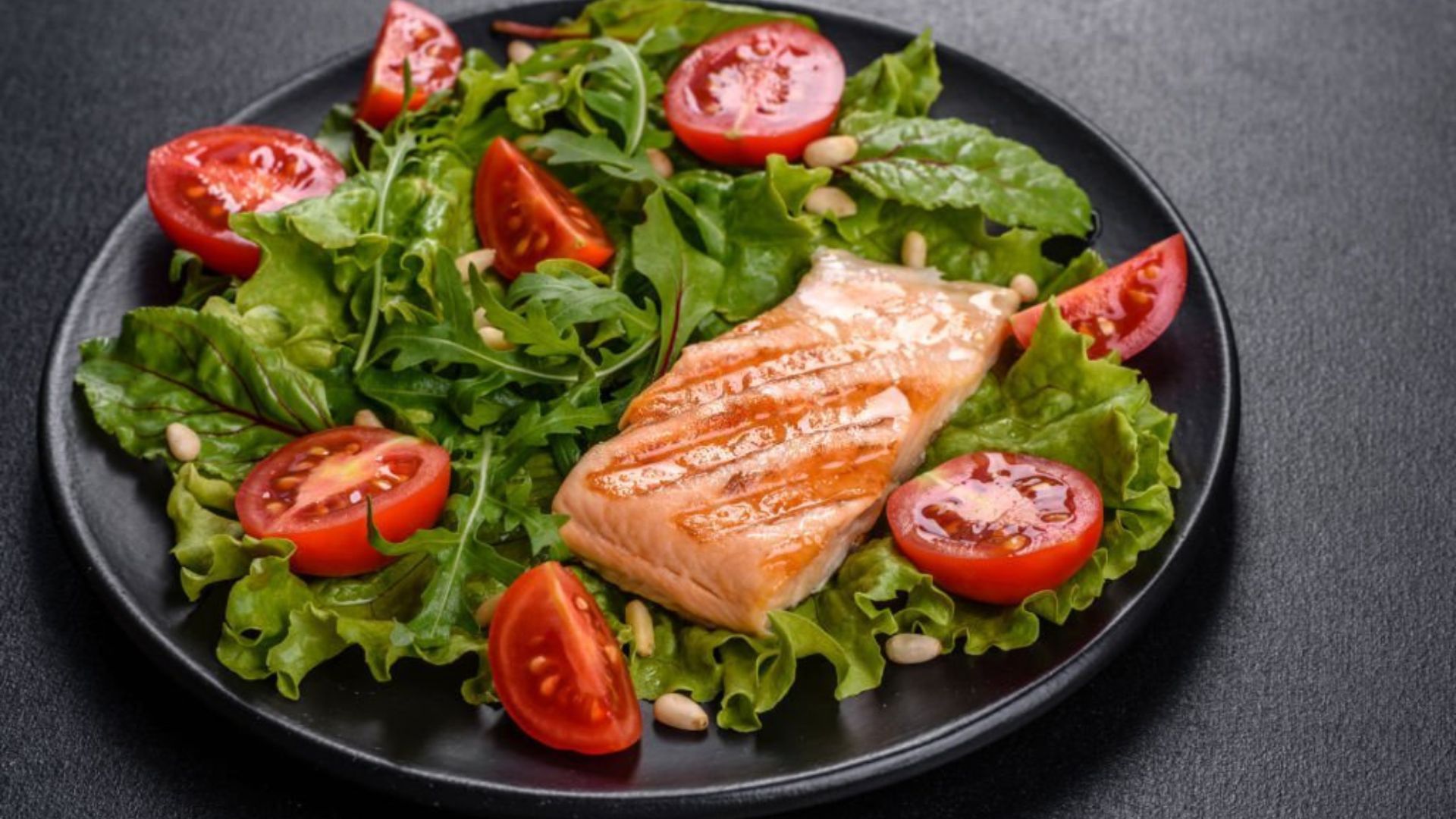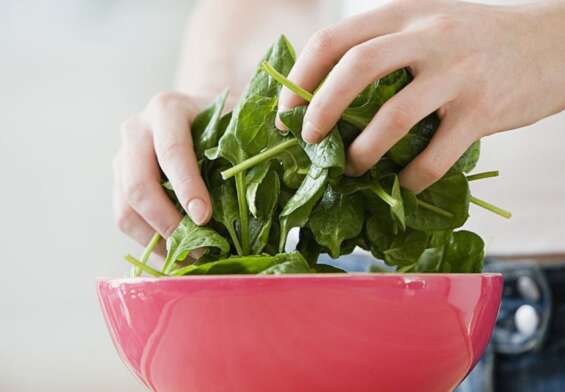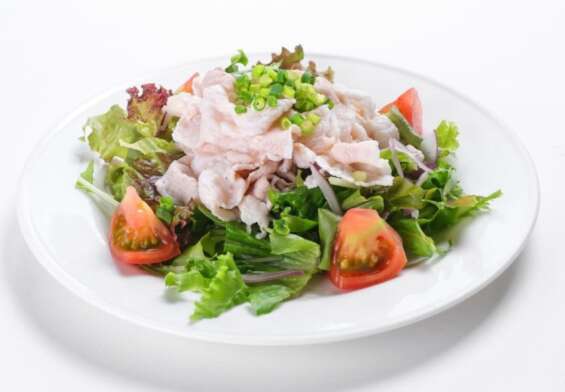
Carb Cycling: How to Boost Your Metabolism and Burn Fat Fast
Carb cycling is a dietary approach that involves alternating between high- and low-carbohydrate days to help optimize your body composition, performance, and overall health. It’s a flexible approach that can be tailored to your individual needs and goals. This diet can help you lose weight, improve your athletic performance, and maximize your overall health. In this article, we’ll discuss the basics of carb cycling, how to set up a carb cycling diet, and the potential benefits and drawbacks of this approach.
What Is Carb Cycling and How Does It Work?
Carb cycling is a dietary approach that involves cycling between periods of higher and lower carbohydrate intake. This method of eating involves alternating between days of lower carb intake and days of higher carb intake. It’s a popular approach among bodybuilders and fitness enthusiasts who are looking to maximize their fat loss while preserving muscle mass.
On low carb days, you’ll reduce your carb intake to a minimum and focus on eating lean proteins, healthy fats, and fibrous vegetables. On higher carb days, you’ll increase your carb intake and focus on eating complex carbohydrates like whole grains, oats, and starchy vegetables.
The idea behind carb cycling is that by alternating between days of low and high carb intake, you can reap the benefits of both approaches. On the low carb days, your body will burn more fat for energy, while on the higher carb days, your body will have the energy it needs to support your workouts.
Carb cycling is not a one-size-fits-all approach. The number of low and high carb days will depend on your goals and activity level. For instance, if you’re looking to cut body fat and don’t have a very active lifestyle, you may have more low carb days than high carb days. On the other hand, if you’re looking to gain muscle and have a more active lifestyle, you may have more high carb days than low carb days.
The key to success with carb cycling is consistency. You’ll need to stick to your plan and not deviate too much in order to see the results you want. However, if you’re willing to put in the work and stay consistent, carb cycling can be a great way to reach your goals.
What Are the Benefits of Carb Cycling?
Carb cycling is a popular dieting strategy that involves alternating between periods of low-carb intake and high-carb intake. The idea is that, by cycling your carbohydrate intake, you can optimize your body’s use of carbs, allowing you to burn more fat while still getting the energy you need. Here are some of the benefits of carb cycling:
- Improved Metabolism: Carb cycling can help to boost your metabolism, allowing your body to burn more calories and fat. This can help you lose weight and maintain a healthy body composition.
- Increased Energy: By cycling your carbs, you can ensure that you always have an adequate supply of energy. This can help you work out harder and longer, leading to better results.
- Improved Digestion: Low-carb days can help to reduce bloating and improve digestion. This can make you feel more comfortable and can even help you lose weight.
- Improved Hormone Balance: Cycling carbs can help to regulate your hormones, which can have positive effects on your energy levels, mood, sleep, and overall health.
- Improved Mental Focus: The energy boost that comes with carb cycling can help you stay focused and alert throughout the day. This can help you be more productive and get more out of your day.
Overall, carb cycling can be a great way to optimize your diet and get the most out of your nutrition plan. With the right approach, it can provide many health benefits and help you reach your fitness goals.
How to Get Started with a Carb Cycling Diet
Are you looking to switch up your diet and get into carb cycling? Carb cycling is a great way to get lean and stay healthy. Here’s what you need to know to get started:
What is Carb Cycling?
Carb cycling is a dietary plan where you alternate between high-carb days and low-carb days. On high-carb days, you’ll be eating more carbs than you normally would. On low-carb days, you’ll be eating fewer carbs than normal. The idea is to cycle your carbs so you’re not eating the same amount of carbs every day.
What Are the Benefits of Carb Cycling?
There are several benefits to carb cycling. For one, it can help you get leaner. By alternating between high-carb and low-carb days, you can better control your calorie intake and keep your metabolism running strong. Additionally, carb cycling can help you maintain energy levels, as well as prevent cravings and hunger.
How Do I Get Started?
The first step is to figure out what your daily calorie needs are. Once you know your calorie needs, you can figure out how many carbs you should be eating each day. Then, decide which days will be high-carb days and which days will be low-carb days. You can also use a food tracking app to help you keep track of how many carbs you’re eating each day.
What Should I Eat?
On high-carb days, you should focus on eating complex carbohydrates like whole grains, fruits, and veggies. On low-carb days, you should focus on eating lean proteins and healthy fats, like nuts and seeds. It’s also important to make sure you’re eating plenty of fruits and vegetables on both high- and low-carb days.
What Else Should I Know?
It’s important to remember that carb cycling isn’t a one-size-fits-all diet. Everyone is different, so you may have to adjust your carb cycling plan to meet your individual needs. Additionally, it’s important to make sure you’re getting enough of other essential nutrients, like protein and healthy fats.
Now that you know the basics of carb cycling, you can get started on your new diet plan! Just remember to take it slow and keep track of your progress so you can make adjustments as needed. Good luck!
How to Design a Carb Cycling Plan
Carb cycling is a popular dieting plan that involves alternating high-carb and low-carb days throughout the week. It’s a great way to keep your metabolism going and to prevent yourself from getting bored of your diet. Plus, it can help you lose weight and reach your fitness goals. Here’s how to design a carb cycling plan:
- Calculate your average calorie intake. In order to design a successful carb cycling plan, you’ll need to know your average daily calorie intake. This will help you determine how much of those calories should come from carbs each day.
- Determine your high-carb days. On your high-carb days, you should aim for about 50-60% of your daily calorie intake to come from carbs. You can also choose to double your carb intake if you wish.
- Choose your low-carb days. On your low-carb days, you should aim for about 20-30% of your daily calorie intake to come from carbs. This will help you create an energy deficit, which is important for weight loss.
- Plan your meals. Once you’ve determined your high- and low-carb days, you can start planning your meals. For example, on your high-carb days, you might want to include foods like whole grains, starchy vegetables, and fruit. On your low-carb days, opt for lean proteins, non-starchy vegetables, and healthy fats.
- Incorporate exercise. Exercise is an important part of any healthy lifestyle, and it can help you reach your goals faster when combined with a carb cycling plan. Try to do at least 30 minutes of moderate-intensity activity on most days of the week.
By following these steps, you can design a carb cycling plan that works for you. Just remember to adjust your calories accordingly, and don’t forget to include exercise!
What Foods Are Best for Carb Cycling?
Carb cycling is a dietary approach that involves alternating the amount of carbohydrates you consume from one day to the next. It can be used to help with weight loss, increase energy levels, and even improve athletic performance.
The best foods for carb cycling are those that are rich in complex carbohydrates, such as whole grains, starchy vegetables, legumes, and fruits. These types of carbohydrates provide your body with a steady supply of energy and essential vitamins and minerals.
Whole-grain foods, such as oats, quinoa, and brown rice, are excellent sources of complex carbs. These grains are also high in fiber, which helps keep you feeling full and satisfied for longer. Starchy vegetables, like potatoes and sweet potatoes, are another great source of complex carbs. They provide a slow release of energy throughout the day, as well as important vitamins and minerals.
Legumes, including beans, lentils, and peas, are great sources of complex carbs, fiber, and plant-based protein. They also contain important vitamins and minerals, such as folate and iron. Fruits are an excellent source of simple carbs, as well as vitamins, minerals, and fiber. Some of the best fruits for carb cycling are apples, oranges, bananas, and berries.
When it comes to carb cycling, it’s important to choose whole, unprocessed foods that provide a variety of nutrients. This will help ensure that you’re getting the most out of your diet and helping your body reach its goals.
Should You Include Supplements with Your Carb Cycling Diet?
Yes, supplements can be a great addition to your carb-cycling diet. Supplements can help support your body and provide essential vitamins and minerals that you may not be getting from your diet. They can also help to boost your energy and metabolism, which can be beneficial while on a low-carb diet.
Before you start any supplement regimen, it’s always a good idea to talk to your doctor or a registered dietitian to make sure that the supplements you are considering are safe and appropriate for you. They can also help you determine the right dosage and timing for taking the supplements.
In general, supplements that may be beneficial for a carb-cycling diet include omega-3 fatty acids, multivitamins, probiotics, fiber, and magnesium. Omega-3 fatty acids help to support your cardiovascular system and can help to reduce inflammation. Multi-vitamins can help to fill any nutritional gaps in your diet. Probiotics can help to support digestion and nutrient absorption. Fiber can help to regulate your blood sugar levels, while magnesium can help to support muscle and nerve function.
In addition to these supplements, you may also want to consider adding a protein powder to your diet to help meet your protein needs. Protein powder can be especially helpful on low-carb days, when you may be more likely to feel sluggish or low on energy.
Overall, supplements can be a great addition to your carb-cycling diet, but make sure to talk to your doctor or dietitian first to make sure you are taking the right ones in the right doses.
What Is the Difference Between Carb Cycling and Macros?
Carb cycling and macronutrient (macro) tracking are two different methods of eating.
Carb cycling is a type of dieting that involves alternating between high and low intake of carbohydrates. This helps to avoid plateaus in your weight loss journey and gives you the flexibility to enjoy carbs on the days you are most active.
Macro tracking involves tracking the number of carbohydrates, proteins, and fats you consume in each meal. This helps you to maintain a balanced diet and reach your fitness goals. With macro tracking, you can make informed decisions about your nutrition, like choosing healthier carbs, eating more protein for muscle building, or reducing fat for weight loss.
In short, carb cycling is a type of dieting, while macro tracking is a way to track your overall nutrition. Both can be used to reach your fitness goals, but it’s important to understand the difference between the two methods.
What Are Good High-Carb Days on a Carb Cycling Diet?
High-carb days on a carb cycling diet are days where you increase your carb intake compared to your low-carb days. On high-carb days, you should be aiming to get most of your calories from carbs. This will help you replenish glycogen stores and help support your energy levels.
For high-carb days, your carb intake should be at least 50-60% of your total calories. You should aim to get your carbs from a variety of sources, including whole grains, starchy vegetables, legumes, and fruit. You can also include some healthier sources of sweeteners such as honey or maple syrup.
It’s important to pay attention to the types of carbs that you’re eating. Try to stick with complex carbs such as oats, quinoa, brown rice, and sweet potatoes. Avoid processed carbs such as white bread, white rice, and sugary snacks.
On high-carb days, it’s also important to increase your protein intake. You should aim for about 15-20% of your total calories to come from protein sources such as lean meats, fish, eggs, legumes, and dairy.
Finally, make sure to get enough healthy fats. Healthy fats are important for energy and overall health. Aim for around 15-20% of your total calories to come from healthy fats such as nuts, seeds, avocado, and olive oil.
High-carb days on a carb cycling diet are an important part of the plan. They help replenish glycogen stores and support energy levels. Just make sure to focus on complex carbs, protein, and healthy fats to maximize the benefits.
What Are Low-Carb Foods on a Carb Cycling Diet?
Low-carb foods are an important part of a carb-cycling diet. Carb cycling is a diet strategy that involves cycling between periods of high and low carbohydrate consumption. During low-carb days, it is important to consume foods that are low in carbs but still provide adequate nutrition.
Fruits: Apples, oranges, berries, kiwi, grapefruit, and other low-carb fruits are great additions to a carb-cycling diet.
Vegetables: All vegetables are low in carbs and can be included in a carb-cycling diet. Some low-carb vegetables include broccoli, cauliflower, spinach, kale, cabbage, Brussels sprouts, celery, asparagus, and peppers.
Nuts and seeds: Nuts and seeds are great sources of healthy fats and protein and are low in carbs. Examples include almonds, walnuts, macadamia nuts, sunflower seeds, and pumpkin seeds.
Dairy products: Low-fat dairy products are low in carbs and provide calcium, vitamin D, and other essential nutrients. Examples include milk, cheese, yogurt, and cottage cheese.
Meat and fish: Lean cuts of meat and fish like salmon, tuna, chicken, and turkey are excellent sources of protein and are low in carbs.
Eggs: Eggs are a great source of protein and are low in carbs. They can be boiled, scrambled, or turned into an omelet.
Healthy fats: Healthy fats like olive oil, coconut oil, and avocado oil are great for cooking and baking and are low in carbs.
These are just a few examples of low-carb foods that you can enjoy on a carb-cycling diet. Be sure to consult with a registered dietitian or nutritionist to get personalized advice on which foods to include in your diet.
How to Avoid Plateaus When Carb Cycling
If you’ve been carb cycling and not seeing the results you want, you may be hitting a plateau. Plateaus are common when carb cycling, but there are some things you can do to break through them. Here are a few tips for avoiding plateaus when carb cycling.
- Change up your workouts: If you’ve been doing the same routine for weeks, it’s time to change it up. Increase the intensity of your workouts or try something new. This will challenge your body in a new way and keep it progressing.
- Switch up your carb sources: If you’ve been eating the same types of carbs, switch them up. Try going with whole grain carbs one day, and then switch to low glycemic carbs the next day. This will keep your body guessing and help you avoid plateaus.
- Increase your protein intake: Protein is essential for building and maintaining muscle mass. Increasing your protein intake will ensure that your body has the fuel it needs to build muscle and stay lean.
- Take a break: If you’ve been carb cycling for a while, it’s not a bad idea to take a break. Take a few days off and focus on getting enough rest and eating clean. This will give your body a chance to reset and come back stronger.
By following these tips, you should be able to avoid plateaus when carb cycling and see the results you’re looking for.
Conclusion
Carb cycling is an effective way to help you reach your fitness goals. It can help you to improve your body composition, reduce body fat, and increase muscle mass. It also has the potential to improve energy levels and athletic performance. The key to success with carb cycling is to find the right balance between calories and macronutrients to meet your goals. With careful planning and monitoring, carb cycling can be an effective way to reach your health and fitness goals.











